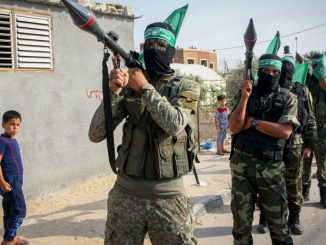
| Published July 31, 2025
🌓 From Supreme to Shadow: Khamenei’s Waning Influence
-
Public absence & limited visibility: At age 86, Ayatollah Ali Khamenei has withdrawn increasingly from the spotlight. He now delivers rare, terse video messages—seldom appearing in public—suggesting exhaustion and deliberate self-isolation.
-
Militarized power shift: As elite IRGC figures fall in Israeli strikes, the Islamic Revolutionary Guard Corps has surged in institutional dominance—economically and politically, overshadowing the Supreme Leader.
-
Crisis of legitimacy: Successive foreign attacks, economic crisis, and international isolation have battered Khamenei’s standing both domestically and abroad. Inflation above 40%, rampant poverty, and widespread discontent strain his authority.
🚦 Succession Under Siege
-
Hand‑picked inner circle: Despite pressures, Khamenei has crafted a shortlist of potential successors—excluding his son Mojtaba to avoid the optics of dynastic rule. Names reportedly include Mohsen Araki, Qomi, and judiciary chief Mohseni-Eje’i.
-
Constitutional process underway: The Assembly of Experts, currently seated until 2032, is constitutionally tasked to elect the next Supreme Leader. As of July 2025, no candidate has been officially confirmed .
-
Power brokers in flux: Meanwhile, internal rivalries intensify between hardliners, pragmatic reformists, and IRGC-aligned factions over how to shape the next era
 Domestic Implications:
Domestic Implications:
1. Power Vacuum and Elite Rivalry
-
Without a clear successor, infighting among clerics, IRGC commanders, and political elites may intensify.
-
Risk of factional gridlock could paralyze decision-making, weaken governance, or trigger instability.
2. IRGC Ascendancy
-
The Islamic Revolutionary Guard Corps may further entrench itself as Iran’s de facto power center—controlling the economy, foreign policy, and even parts of succession.
-
This shift reduces clerical influence and accelerates Iran’s transformation from a theocracy to a military-led authoritarian state.
3. Erosion of Legitimacy
-
As Khamenei retreats from view and the system fails to deliver economic relief, public trust erodes.
-
This could ignite new waves of protests, particularly among youth, workers, and marginalized communities.
4. Succession Crisis
-
If the Assembly of Experts fails to agree on a successor—or chooses one lacking public legitimacy—Iran could enter a period of prolonged internal instability.
-
There’s a small but growing chance of radical constitutional change or public rejection of the Supreme Leader model.
🌍 Regional & Global Implications
5. More Aggressive Foreign Policy
-
A weakened leadership may embolden hardliners and the IRGC to escalate regional tensions (e.g., via Hezbollah, Hamas, or Houthi proxies).
-
This could trigger more Israeli or U.S. strikes and increase the risk of regional war.
6. Nuclear Deal Collapse or Breakout Risk
-
With no moderate leadership and no clear diplomacy mandate, Iran may further expand its nuclear program.
-
Lack of restraint could raise the risk of a nuclear breakout and potential preemptive action by Israel or the West.
7. Shift in International Diplomacy
-
Foreign governments (especially the U.S., EU, China, and Russia) may start hedging: preparing for a future without Khamenei by courting alternative Iranian factions or planning for collapse scenarios.
-
Expect deeper Chinese and Russian attempts to influence the post-Khamenei power structure.
 Overall Takeaway:
Overall Takeaway:
As Ayatollah Ali Khamenei fades from public view, Iran stands at a historic crossroads. His retreat signals not just the decline of a leader, but the unraveling of a political system that has long centered on clerical authority. In his absence, power is tilting decisively toward the Islamic Revolutionary Guard Corps, ushering in a more militarized and potentially more aggressive era in Iranian governance.
The absence of a clear successor fuels uncertainty, both at home and abroad. Domestically, it threatens elite fragmentation, public unrest, and legitimacy crises. Regionally, it raises the risk of more confrontational foreign policy moves as Iran’s hardliners seek to project strength amid internal weakness. Globally, the world watches closely—because what comes after Khamenei could shape the Middle East for decades to come.
Whether Iran emerges from this transition more repressive, more unstable, or more open to reform will depend on who takes power—and how they choose to wield it.





Be the first to comment